"Influences" Prime Post for 27th Day
Watching stories to living stories to reading stories to writing stories...
Everything in the Universe is an influence—mental, physical, or spiritual—for good or bad, laughing or crying, goosebumps or heebee jeebies, epiphanies or foreboding. So, as a prelude, God is the ultimate influencer: the Uncaused First Cause. A mystery deeper than the deepest ocean and wider than the eastern quadrant of the sky and yet straighter and narrower than any gate James Douglas Morrison could hope to break through let alone blow down with his hedonistic breath.
After God, I number four major influences upon me: one, being born in America in the late 1960’s, two, my parents’ and grandparents’ being readers and school teachers; three, the music I was exposed to growing up—church, typical Western-based oeuvre, and an extreme, heavy dose of that old good rock and roll—from the 50’s, 60’s, 70’s, and 80’s—the 90’s didn’t grab me as being interesting and I started to tune out; and fourth, movies and TV (movies were slipping in the 60’s but TV was in a golden age up to the early 70’s when it was smacked in the face by dual blockbusters: Jaws and Star Wars.
My being a reader is due to my mom, and to some extent my maternal grandmother, reading to me and my brother (she and my grandma were teachers). My dad had been a teacher when I was very born, but switched over to computer programming: he read Bible studies, how-to books, and informational texts for his job; his “fun” reading consisted of primer books from his public education and Doc Savage novels. My mom was an avid reader of British mystery novels: she favored Her Royal Majesty, the True Queen: Agatha Christie and how polite British society was portrayed: “Don’t mind the body. Step over the chalk mark if you please. Lemon with your tea? That’s a good chap.” She caught the reading bug from her father as my maternal grandpa subscribed to Reader Digest’s condensed books sent in a series of hardbacks as well as being a lover of crossword puzzles.
My brother was a natural adept at anything. A master’s apprentice with the golden touch while I struggled with everything. He had the cooler clothes, the better toys, and the most interesting books. Two of them had long fascinated me: 20,000 Leagues Under the Sea and Treasure Island. Both the copies he owned had been published in 1968, the year before I was born. Both had deep blue and green covers. Both had dark and mysterious images that depicted the story’s action: 20,000 Leagues being a tad more studious and scientific in its Victorian demeanor and Treasure being more gothic with watery drawn dark pirate faces with wild hair. One would put you in a glass tank of brine to study you and the other would drop you into an amber glass bottle of rum to drink you. There were treasure chests in both stories: one story coveted the wealth and the other used it for ballast.
I tried to read the words on the page, but they were hard to de-cypher. I had to belly-crawl over their hermetic crypticism and if there were too many, my meaning got lost on the page: I drowned in the ink.
Images were a saving grace. Church sermons came alive with stain glass images crawling out of the pane and the landscape behind the baptistry drawing me inwards. Often paintings would stop me and try to pull me into a world with depth and width beyond the two-dimensional four frame limits.
When my brother got into comic books, I followed suit because I wanted to do everything my older brother did. My dad was a big Superman aficionado as it turned out. But my brother moved from Superman to Batman to Spiderman. By the late 60’s, all these had TV their own shows with memorable theme songs that we kids could quote on demand. Later, I kept up the fascination of comic book reading after my brother had lost interest and moved from superhero lines to grittier stuff like Sgt. Rock and Weird War Tales. For me, comic book images told more of the story and action than the dialogue or exposition.
By now I preferred movies and TV over any kind of reading. Commerical TV afforded licensing and syndication so that the local channels could broadcast popular new (and edited for TV) movies alongside the classics from the golden age of film. I loved King Kong, Ray Harryhausen’s Jason and Sinbad, the few times I got to see bits and pieces of Disney’s duo classics of 20,000 Leagues and Treasure Island, the Universal Quad Monster Squad and the Hammer Horror remakes, the Vincent Price Poe adaptations, but the “king” of them all was The Planet of the Apes and the ensuing series of sequels that kept coming out every time I turned on the tube.
Prior to 1977, there had been no story which grabbed me like TPOTA. An adventurer lost and turned fugitive wanting only to escape from being a freak of society to an unknown destiny. Timeless and grandiose in its comments of how others defined being “civilized” for themselves and others. It was a mirror of the psyche of the 60’s with a good measure of the Twilight Zone ironic twist ending. But it was not heroic and grand in being hopeful.
When the powers that be (the same old ones that like to make money over art)turned TPOTA into a TV series, I was a bona fide believer. Until the show got cancelled and was withheld from syndication. So, my brother and I found the strange and mysterious The Night Stalker until it, too, was cancelled consigned to a black hole instead of syndication. Saturday TV almost made up for it with a series of bizarre shows produced by Sid and Marty Kroftt: H. R. Puf’n Stuff, Lidsville, and the cream of the crop: Land of the Lost. These were portal fantasies were the outsider was the stranger come to town only to be thrown into a foreign world where they were the freak seeking to survive and one day return home. For some reason, I identified with this trope again and again.
I was five years old when my blessed mother bought my brother and me a movie pass to old science fiction and adventure films at our local theatre for Summer re-run matinees: I remember seeing (the forgotten) Fantastic Voyage, one of my favorites: Journey to the Center of the Earth (with the wonderful James Mason). I was able to see Jason and the Argonauts on the big screen as a child in the Ozarks where I now live as an adult. My mom struck gold again when she scored tickets for me and my brother to watch the entire The Planet of the Apes series as a package block called, Go Ape!
And then came 1977 Memorial Day weekend and the release of Star Wars when I was seven. I didn’t know my life would change. My friends saw it and raved, but my dad wouldn’t take me. My uncle saw it and raved, but my dad wouldn’t take me. I scored Marvel’s jumbo edition of the comic book. I poured over the names and depiction of action and begged my dad to take me. But he wouldn’t. First run movies would be at the top of the marquee at the big movie theaters. Then they would get moved to smaller screens with one last go around during late summer at drive-ins.
My grandpa came to the rescue and took my brother and me to see Star Wars in a small theatre: Petite Four in Collinsville, Illinois. We raved to my dad about it and he took us to see it again (we had never watched the same movie in a theater twice before) at the drive-in on its last go around for the summer (and the next year, when they re-released it, he took us to see it again in the biggest movie theater in Belleville—that’s when they added this Episode IV thingie and gave it a new subtitle).
I fell in love with Star Wars and learned everything I could about the story through advertisements and merchandise. My parents bought me the story soundtrack which had narration over some excerpts of the film’s action. While I listened to the record, I would act out the story’s action until I memorized it.
Star Wars was the event that solidified me wanting to tell stories. The goal was to create, write, and tell something as big and grand as Star Wars. I’m still trying, folks.
But I struggled with school work. I was a troubled reader and writer and had to go to resource classes for extra help. And I still found comic books more alluring than thick books of fiction, no matter what I tried to read.
By 1980, I was struggling in school. My parents did an intervention and demanded that I put away comic books and read bigger books. The challenge was for me to pick out a book I liked and then finish reading it and tell them about it. After giving up on a Buck Rogers book that my brother had breezed through with his usual aplomb while I had failed again, I saw in the back an ad for a series of books: The Chronicles of Thomas Covenant the Unbeliever.
There was a trilogy to these adventures. Four words struck me from my church experience: chronicles, Thomas, covenant, and unbeliever. I was awestruck. You mean, someone could write about such things? Anything was possible?
In March 1981, I found the trilogy at Waldenbooks at the St. Clair Square. My mom was thrilled I had found a rather large book to read. She didn’t even mind that it was high fantasy. It was a deep and challenging read as its author, Stephen R. Donaldson, favors anti-heroes and serious themes and archaic language.
After reading the trilogy, by that December, I did two remarkable things: I asked my parents for my own dictionary (which I still have) and I had written my own fantasy story, The Dark Dragon, which was about 492 pages long by hand.
First, I saw stories, then I lived stories, but it was only after I read stories than I started to write my own stories.
cont;nue

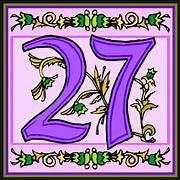


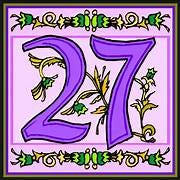
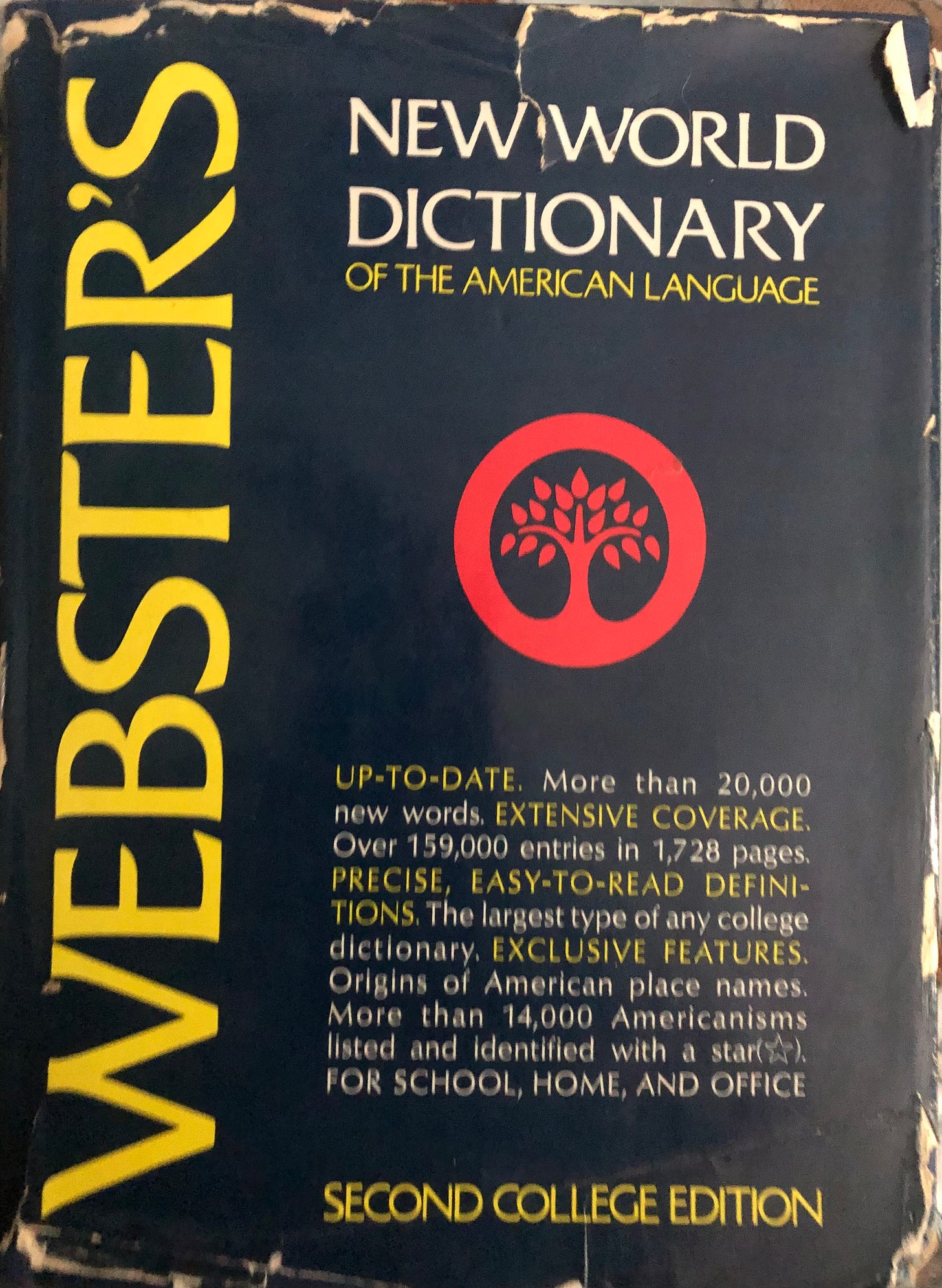
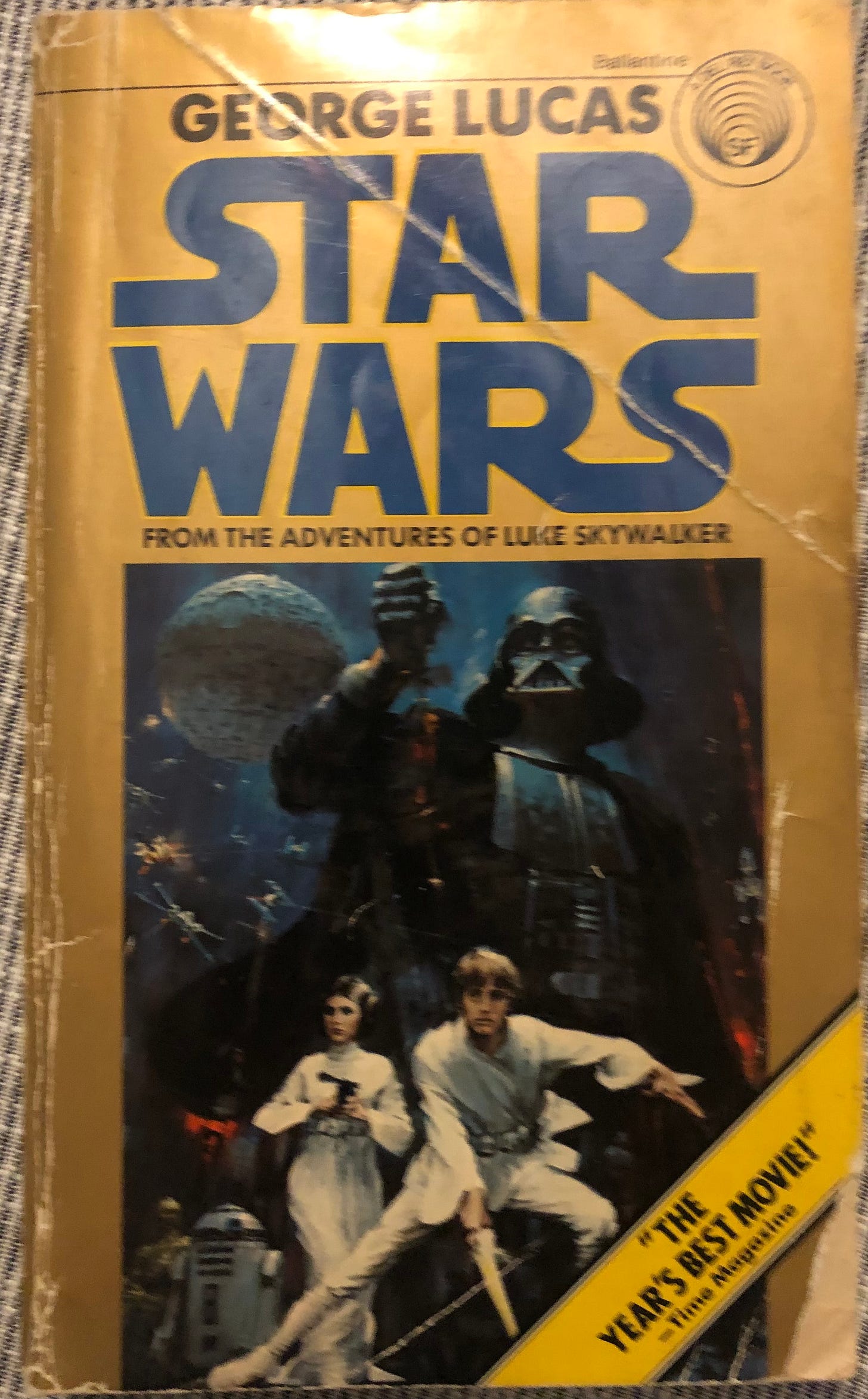
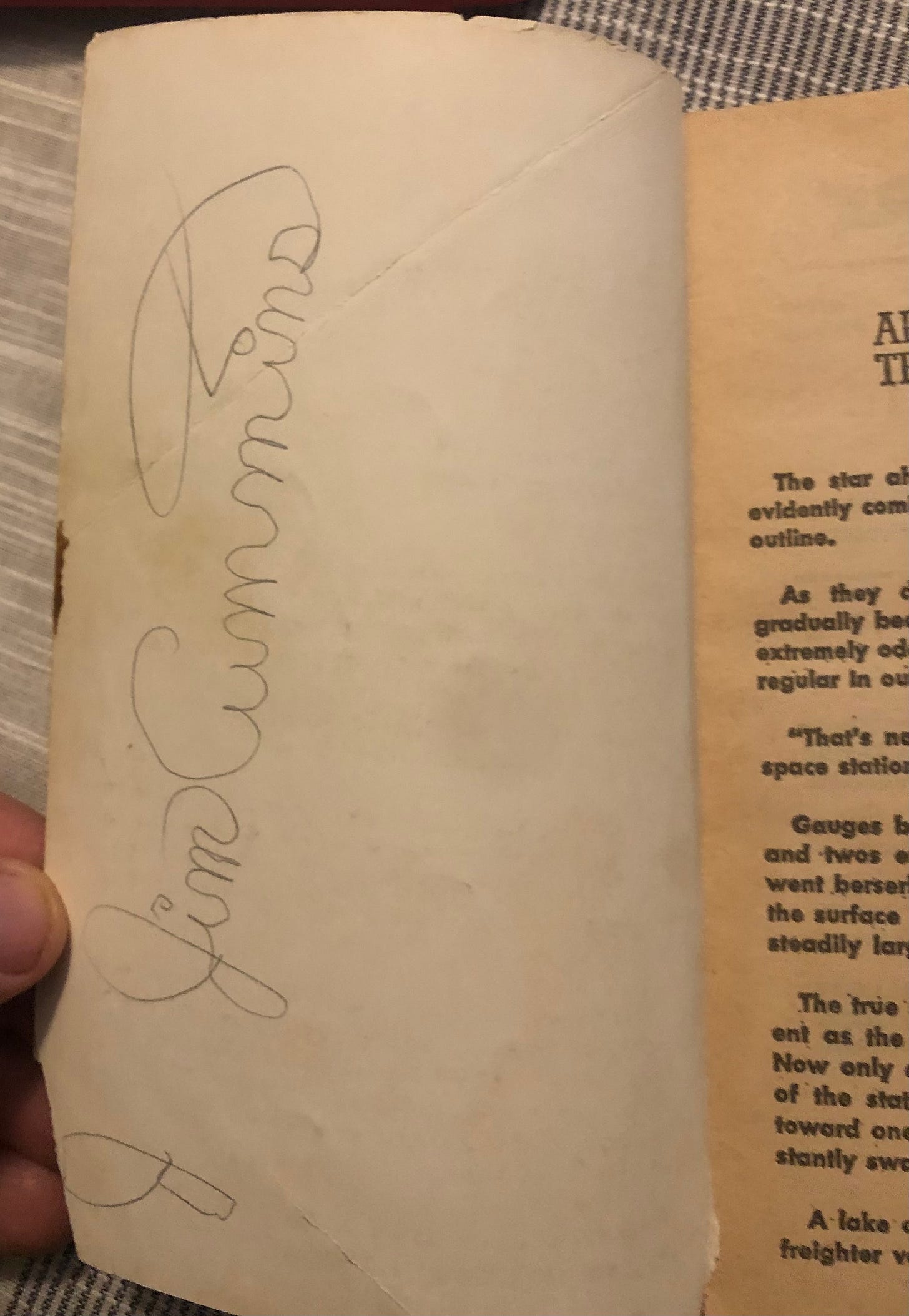
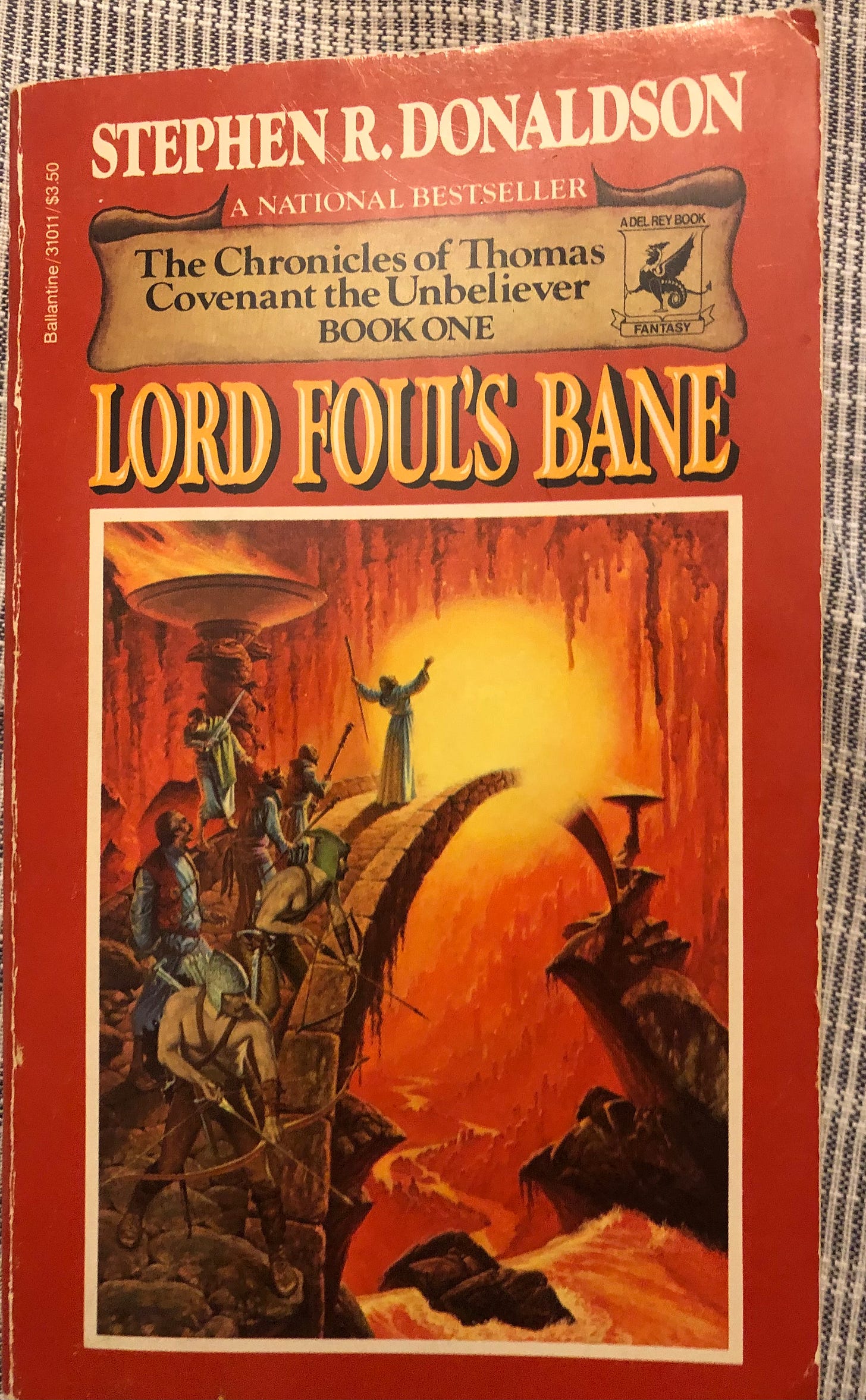
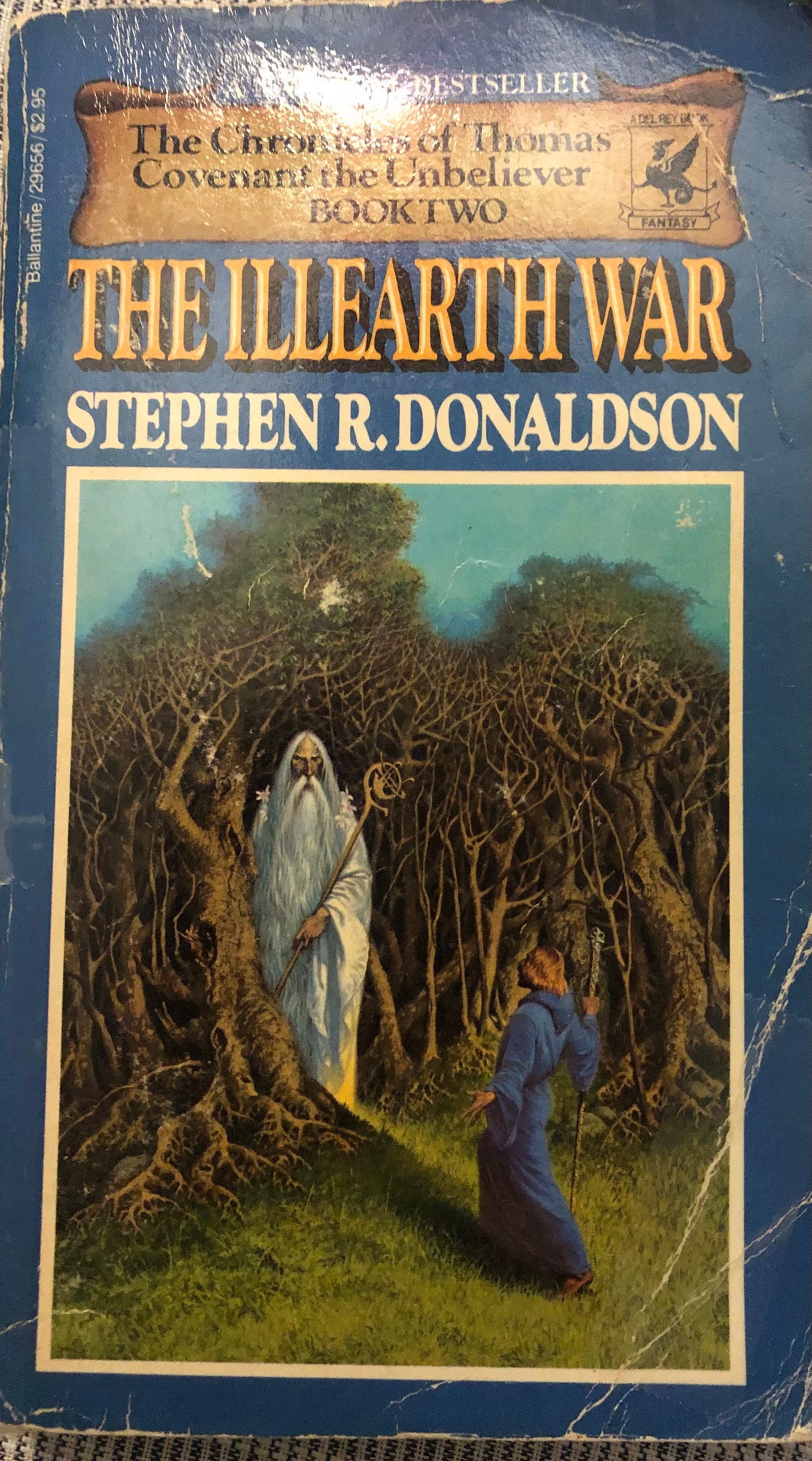
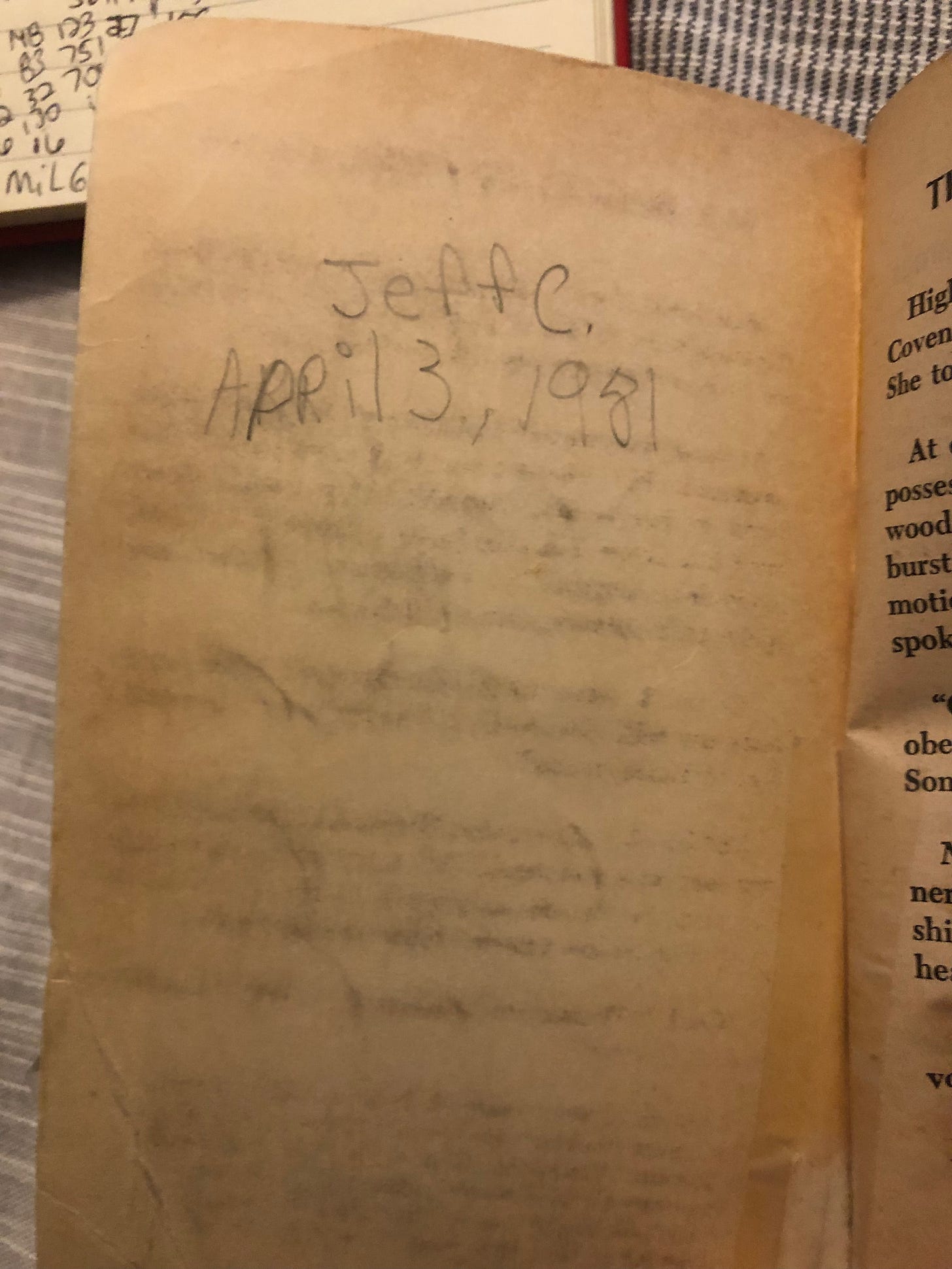
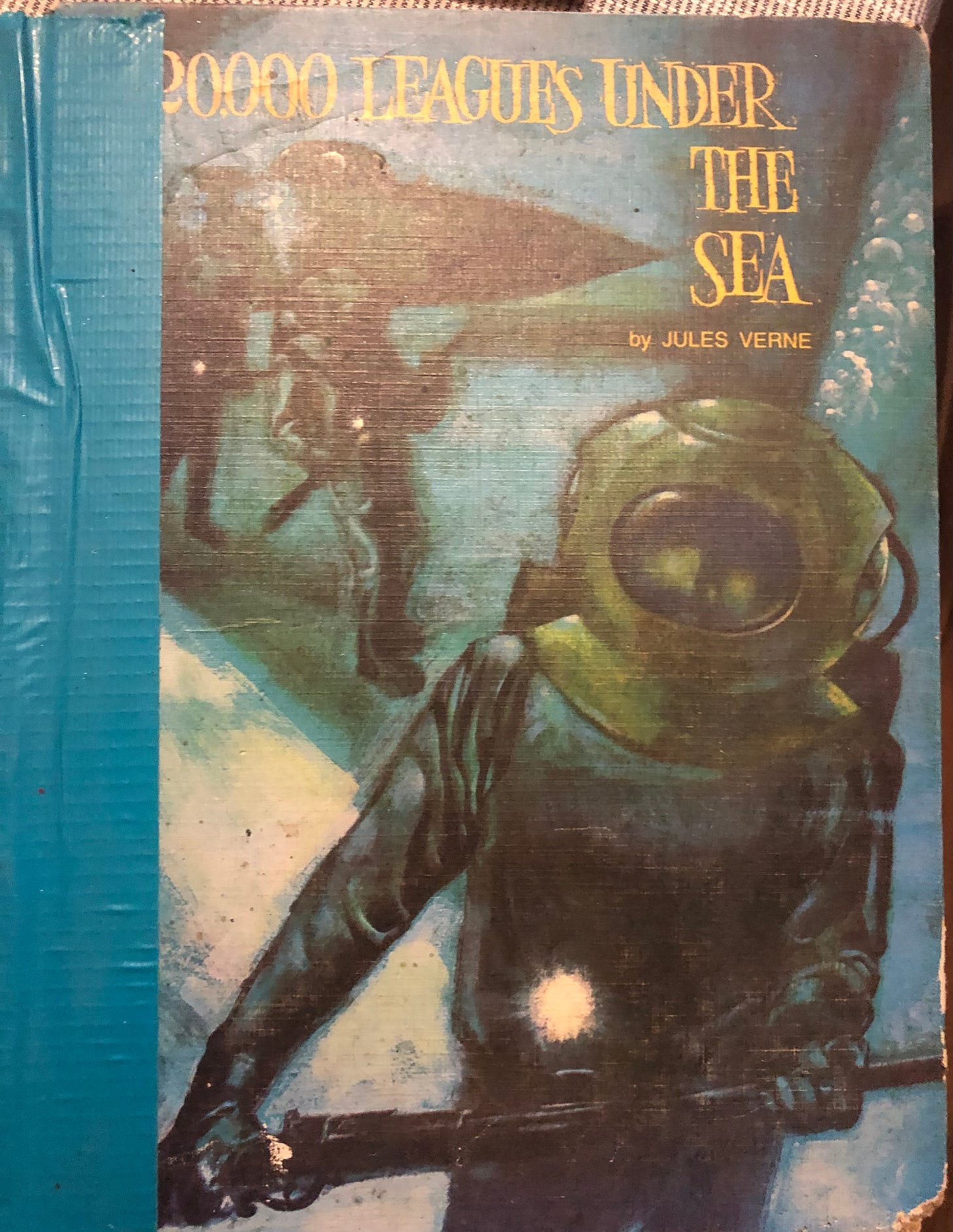
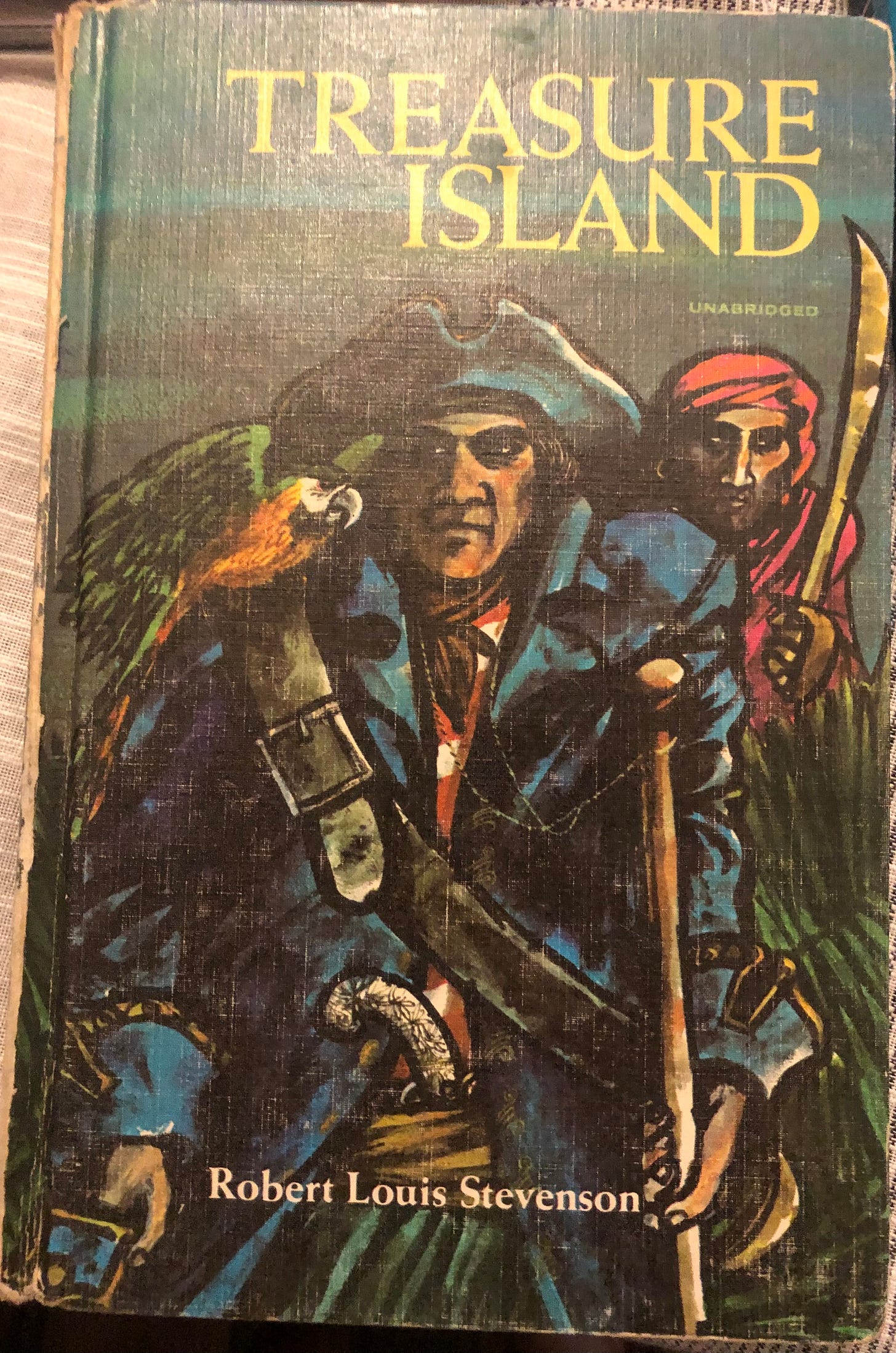
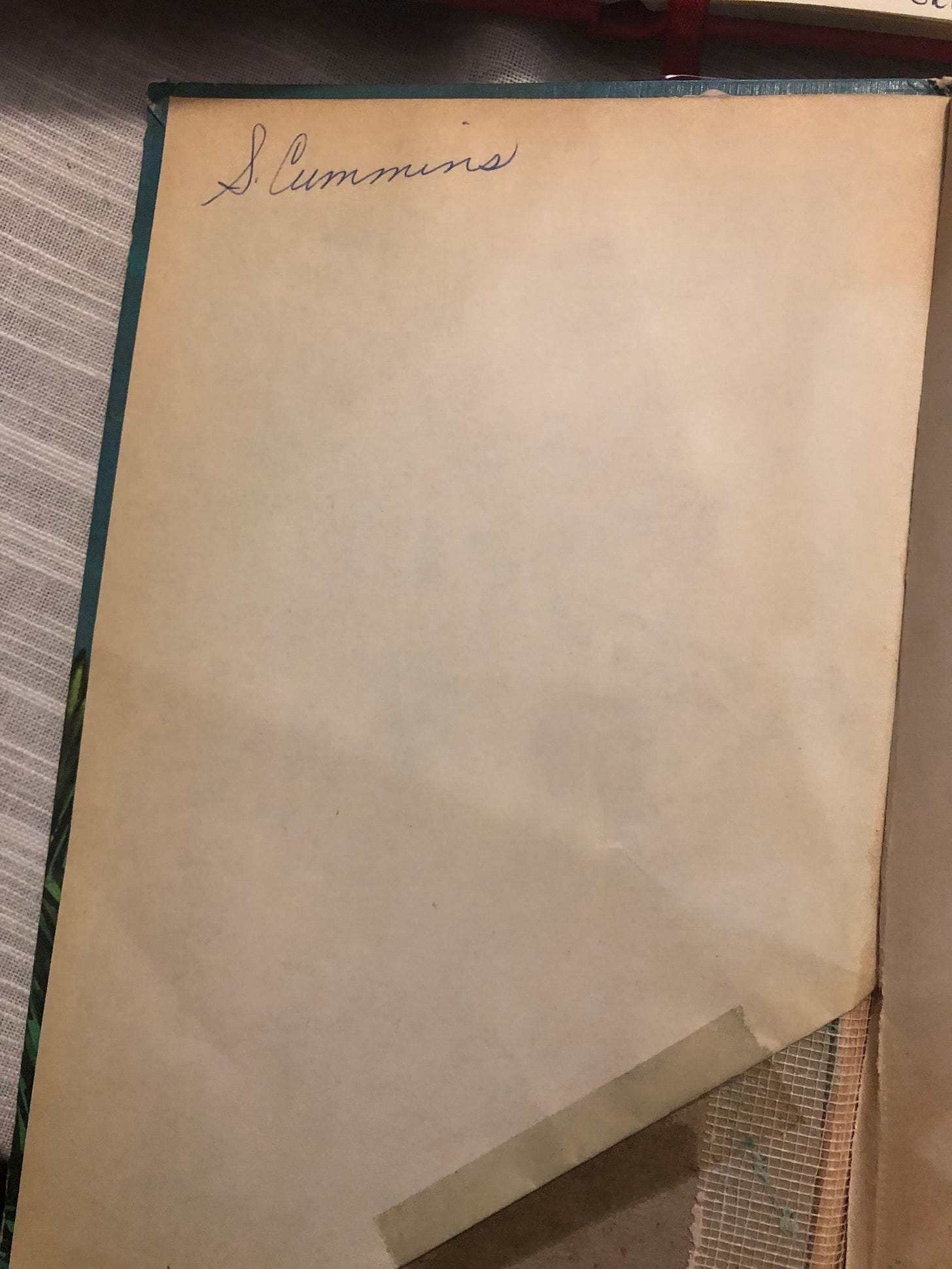
@Janine Eaby , thank you for the like! Hope you had a good Memorial Day!